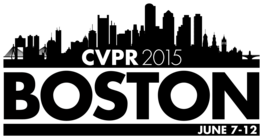-
End-to-End Integration of a Convolution Network, Deformable Parts Model and Non-Maximum Suppression
AbstractDeformable Parts Models and Convolutional Networks each have achieved notable performance in object detection. Yet these two approaches find their strengths in complementary areas: DPMs are well-versed in object composition, modeling fine-grained spatial relationships between parts; likewise, ConvNets are adept at producing powerful image features, having been discriminatively trained directly on the pixels. In this paper, we propose a new model that combines these two approaches, obtaining the advantages of each. We train this model using a new structured loss function that considers all bounding boxes within an image, rather than isolated object instances. This enables the non-maximal suppression (NMS) operation, previously treated as a separate post-processing stage, to be integrated into the model. This allows for discriminative training of our combined Convnet + DPM + NMS model in end-to-end fashion. We evaluate our system on PASCAL VOC 2007 and 2011 datasets, achieving competitive results on both bench- marks.
Related Material
[pdf][bibtex]@InProceedings{Wan_2015_CVPR,
author = {Wan, Li and Eigen, David and Fergus, Rob},
title = {End-to-End Integration of a Convolution Network, Deformable Parts Model and Non-Maximum Suppression},
booktitle = {Proceedings of the IEEE Conference on Computer Vision and Pattern Recognition (CVPR)},
month = {June},
year = {2015}
}
These CVPR 2015 papers are the Open Access versions, provided by the Computer Vision Foundation.
Except for the watermark, they are identical to the accepted versions; the final published version of the proceedings is available on IEEE Xplore.
Except for the watermark, they are identical to the accepted versions; the final published version of the proceedings is available on IEEE Xplore.
This material is presented to ensure timely dissemination of scholarly and technical work.
Copyright and all rights therein are retained by authors or by other copyright holders.
All persons copying this information are expected to adhere to the terms and constraints invoked by each author's copyright.

